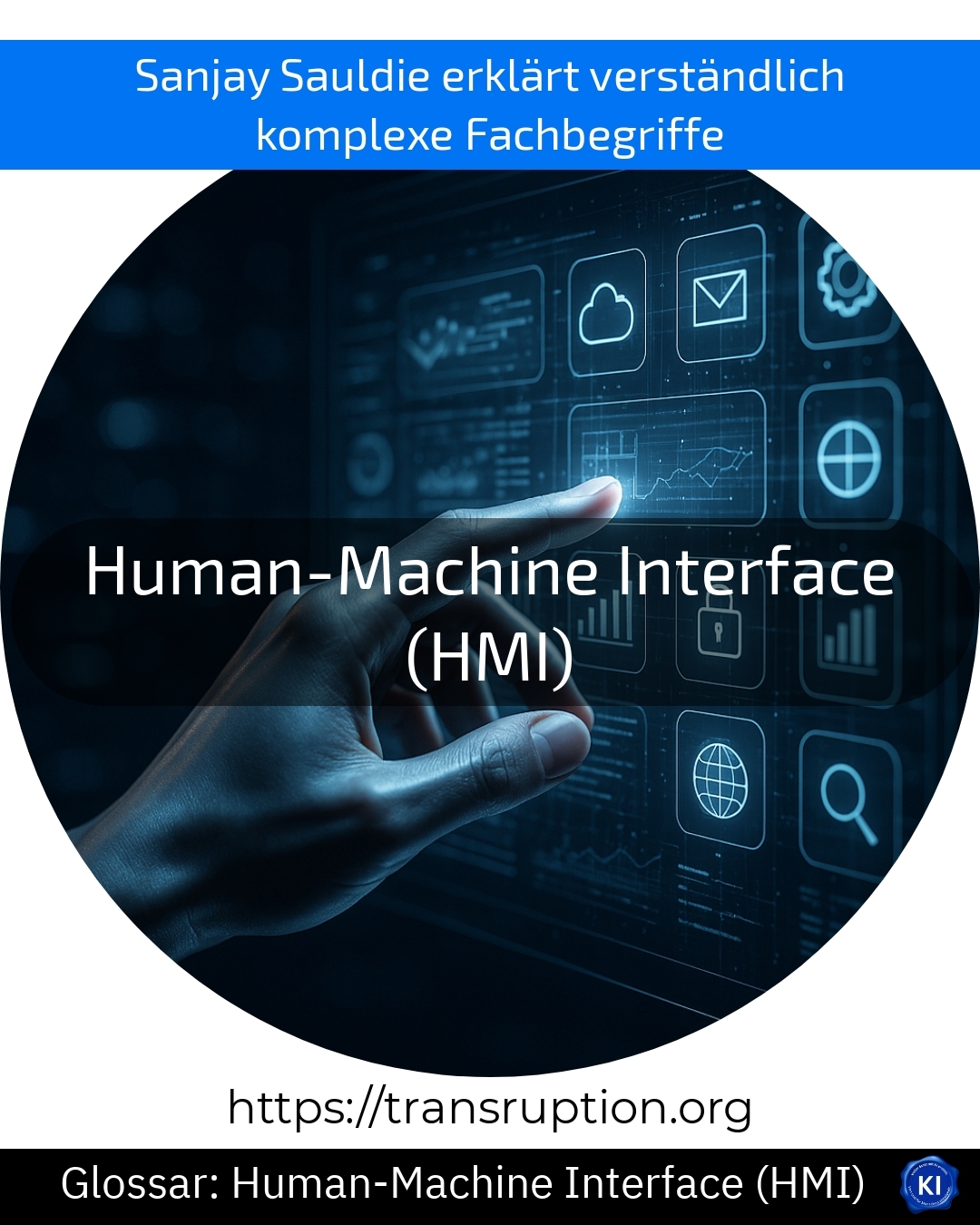The term human-machine interface (HMI) is primarily used in the fields of automation, industry and Factory 4.0 as well as artificial intelligence. A human-machine interface is the interface between man and machine. This means that people communicate with technical devices, systems or even robots via the HMI.
HMI can simply be a touchscreen that you use to control a machine in a factory, for example. You can see important data such as temperatures or production figures on the screen and can change settings with just one tap. Modern HMIs are often designed to be particularly user-friendly so that even people without technical training can operate them.
A practical example: In a production hall, there is a large robot arm that assembles car parts. Using a human-machine interface, employees can not only read the current work status, but also control the robot or stop it quickly if necessary.
HMIs make work more efficient, safer and more flexible. They are particularly indispensable in Industry 4.0 because more and more machines are becoming intelligent and networked. The human-machine interface is therefore the gateway to digital control in modern industry.















